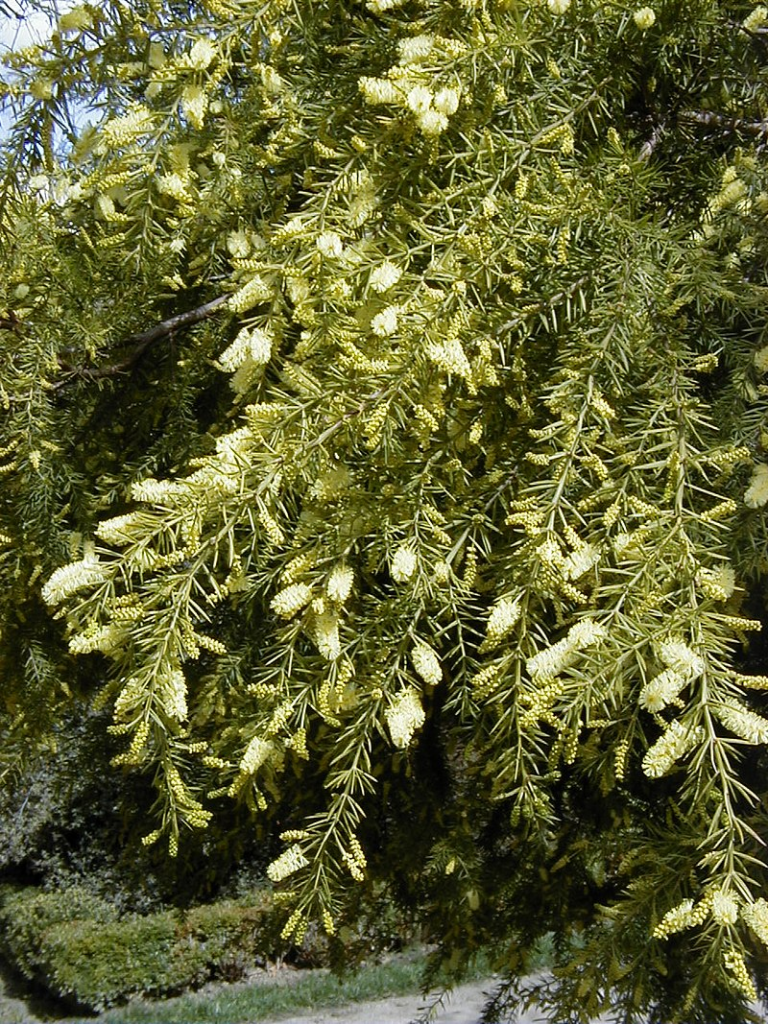
Also known as prickly-leaved wattle, star-leaved acacia, prickly mimosa, and whorl-leaved acacia, this flowering evergreen shrub or small tree is native to southeast Australia including Tasmania. It is a member of the legume family, Fabaceae, that also includes pea, lupine, and alfalfa. The plant grows up to 33′ tall and has young shoots that are hairy and angularly ridged. Instead of leaves, the plant has dark green, spine-like phyllodes that are 1⁄3-5⁄8 ” long and grow on the stem in whorls of 6. From winter to spring, 1-3 cylindrical spikes of flowers appear in the axils of the phyllodes. The spikes are 1⁄2 to 1 1⁄8″ long and densely packed with light yellow flowers. The fruit that follows is a papery, dark brown, flat seed pod that is 1 1/2 to 3″ long, often curved, and lightly hairy. Prickly moses is valued for it use as a hedge, screen or bird habitat, and is a good choice for bird, wildlife, and winter gardens. The genus name, Acacia, comes either from the Greek word akazo meaning to sharpen or from the Egyptian word akakia, a name given to the Egyptian Thorn, Acacia arabica. The specific epithet, verticillata, is from the Latin word vertigo meaning turning and refers to the whorled arrangement of the phyllodes.
Type: Flowering evergreen shrub or small tree
Outstanding Feature: Flowers
Form: Rounded
Growth Rate: Rapid
Bloom: Small spikes of light yellow flowers in winter and spring
Size: 6-33′ H x 10-16′ W
Light: Full sun to part shade
Soil: Average, medium moist, well-drained; tolerant of drought and periodic waterlogged soil
Hardiness: Zones 8-10
Care: Prune lightly to encourage bushiness; avoid hard pruning
Pests and Diseases: Generally healthy but susceptible to attach by acacia gall
Propagation: Seed ( scarified or with boiling water treatment), semi-hardwood cuttings
Outstanding Selections: ‘Rewa’ (compact, fragrant)
Photo Credit: Wikipedia